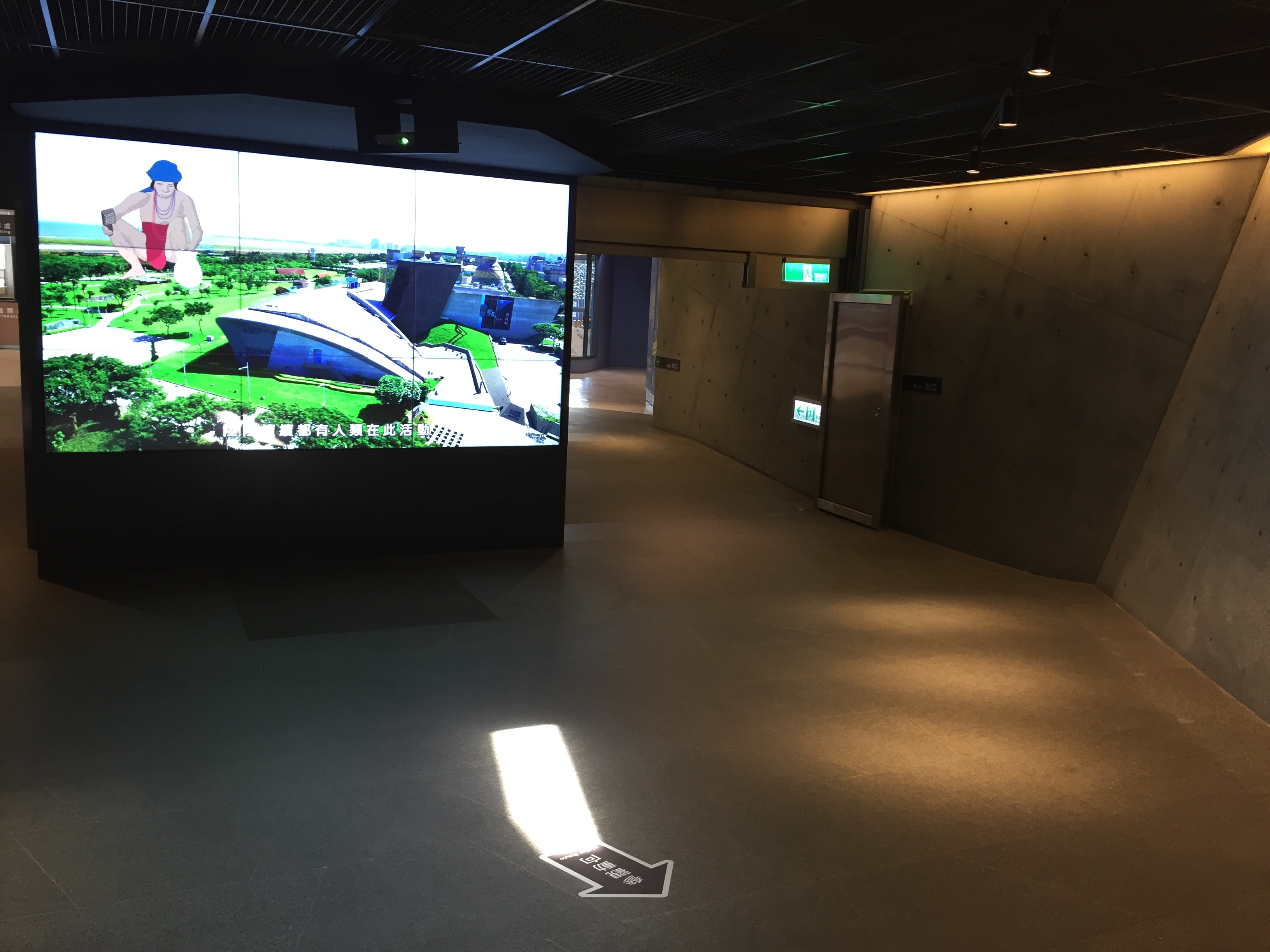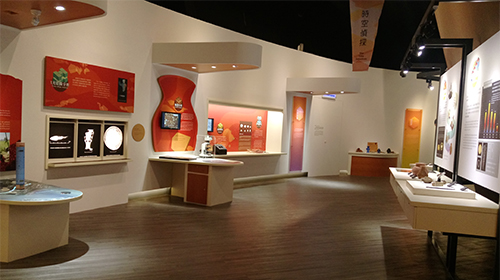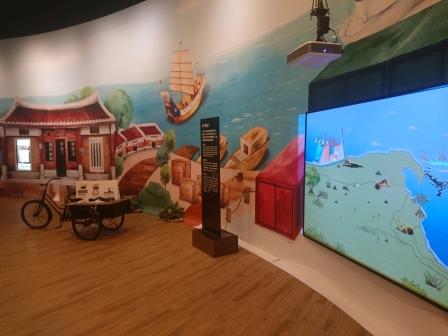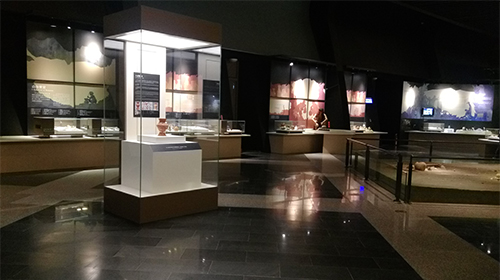 Sites from above
Sites from above【Sites from above】
This section is located at the entrance to the museum’s Permanent Exhibition. A TV wall made up of nine 55-inch LCD display screen is combined with location and themed animated films, showing introductions to archaeological sites in Bali and giving visitors the feeling of actually being onsite.
Of the 10 national archaeological sites in Taiwan, two, Shihsanhang site and Tapenkeng site, are in Bali; of the six cultural layers in north Taiwan, three are named after three archaeological sites in Bali. From around 6,000 years ago, people have continually lived on the coast on the left bank of the Tamsui River mouth, the plain and in the mountain forest, leaving Bali full of artifacts and memories left behind by former residents.
Why are these archaeological sites important? What is their situation now? Let’s take an aircraft and fly from Guanyin mountain to the river mouth and coast to see the real face of different archaeological sites in different eras!
 Archaeology Workstation
Archaeology Workstation【Archaeology Workstation】
An archaeologist is just like a detective of space and time, searching for evidence in the objects and traces that are unearthed and gradually piecing together the lives of prehistoric people. This area explains how to get the meaning of prehistoric culture from the research view of archaeologists.
Archaeology Workstation introduces the artifacts be made of stone, wood, bone, horn, tooth, shell, clay and metal that are often found in archaeological sites, explaining their characteristics and how they are preserved after leaving the site.
It also introduces various kinds of scientific analysis, including typology, carbon-14 dating, pollen analysis, pottery analysis, x-ray image analysis, geological analysis and human osteology. Through actual operation and real models, visitors are given an understanding of the process of scientific analysis of objects. Also, various ancient maps and pictures relating to Taiwan from the early Qing period are displayed, showing how various scientific methods are used to help archaeologists learn about the past.
 Bali Time Machine
Bali Time Machine【Bali Time Machine】
This area displays the five important eras in the Bali area and related events in condensed form. On the east side of Bali is Guanyin Mountain, the Taiwan Strait is to the west, the Tamsui River to the north; all still in existence, however, the people and cultures of this land have continually changed over time. Now, let’s take a time machine back and learn the stories of Bali.
This exhibition utilizes various types of new display technology such as using projection color changes in a landform sandbox to show visitors the changes in terrain and landscape; using the sensor system to allow the rich ecological resources of the wetland of the north sea wall of Taipei Port and Waziwei Mangrove Reserve in the map to instantly come to life with just a light touch; put on a pair of VR glasses and enter old photographs, seeing the thriving river transport on the Tamsui River; an old land contract that seems unremarkable records the interaction between Han Chinese and Bali’s indigenous people; AR broadcasting is used to reproduce the settlement in which Shihsanhang people lived. Visitors will feel like they have returned to the Bali of 1,000 years ago and are experiencing the lives of Shihsanhang culture people.
 Shihsanhang Life
Shihsanhang Life【Shihsanhang Life】
Shihsanhang Life systematically exhibits artifacts from the Shihsanhang Site and explores the living resources of the Shihsanhang culture people and their culture.
The Shihsanhang Site was the first site to show evidence of smelting method to make iron in Taiwan and is thus important evidence of the arrival in the Metal Age of north Taiwan. The stone tools, bone tools and pottery decorated with exquisite patterns unearthed at the site show the craftmanship and artistic sense of the Shihsanhang culture people. The discovery of bead jewelry, bronzeware, glass and gold and silverware are evidence that the Shihsanhang culture people engaged in trade; the various animal bones found in the exploration pits, such as deer, boar, fish, bird and shells, show the abundance of resources at the time and the dietary habits and subsistence pattern of the people.
It is well worth recommending the greatest treasure of the Shihsanhang Museum of Archaeology, the Anthropomorphic Jug with three-dimensional human face; it is the only one of its kind in Taiwan and is splendid exhibit that should not be missed.